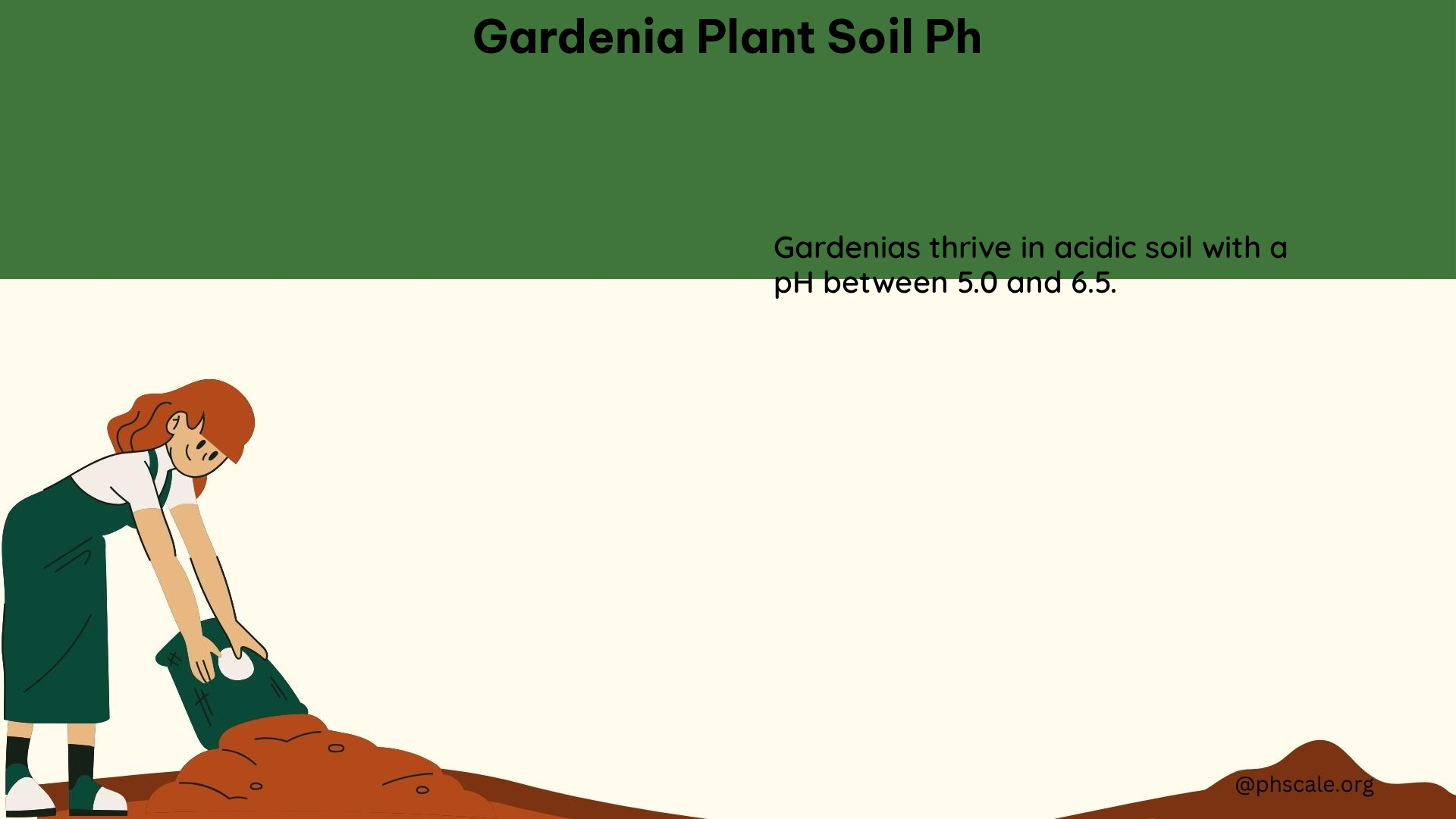The ideal pH range for gardenia plants is between 5.0 and 6.5, as this slightly acidic to neutral soil environment ensures the availability of essential nutrients for their growth and development. Maintaining the right pH level is crucial for gardenias, as it affects the plant’s ability to absorb nutrients, leading to problems like yellowed leaves and poor growth if the pH is too high or too low.
Ideal pH Range for Gardenia Plants
Gardenias thrive in a slightly acidic to neutral soil pH range, typically between 5.0 and 6.5. This pH range ensures that essential nutrients, such as iron, magnesium, and calcium, are readily available for the plant’s uptake, promoting healthy growth and vibrant blooms.
Lowering Soil pH for Gardenias

If your gardenia’s soil pH is too alkaline, you can take the following steps to lower it:
- Peat Moss and Washed Sand: Mix 2/3 peat moss with 1/3 washed sand to create a soil blend that will help lower the pH.
- Coffee Grounds: Use diluted coffee grounds as a natural acidifier. This method is especially helpful for indoor gardenias.
- Garden Sulfur: Apply garden sulfur to the soil to lower the pH. This is a more aggressive method and should be used with caution to avoid over-acidifying the soil.
Importance of Maintaining the Right pH
Maintaining the ideal pH range is crucial for gardenias because it affects the availability of essential nutrients. If the pH is too high (alkaline) or too low (acidic), it can lead to nutrient deficiencies, causing problems like yellowed leaves, poor growth, and reduced flowering.
Common Contaminants and Chemicals that Affect Gardenia Soil pH
Several common contaminants and chemicals can impact the pH of gardenia plant soil, including:
- Nematodes: These microscopic worms can cause root damage and affect nutrient uptake, leading to poor plant growth.
- Limestone and Sea Shells: Naturally occurring limestone and sea shells can increase soil pH, making it alkaline and unsuitable for gardenias.
- Insecticides and Fungicides: Overuse of these chemicals can alter soil pH and affect the microbial balance, leading to poor plant health.
Solutions and Alternatives for Maintaining Gardenia Soil pH
To maintain the right pH level and deal with contaminants, consider the following solutions and alternatives:
- Soil Testing: Regularly test your soil pH using a home soil test kit or a liquid pH test from a fish store.
- Organic Matter: Add organic matter like compost or peat moss to enrich the soil and maintain a balanced pH.
- Grafted Gardenias: Use grafted gardenias that are tolerant of alkaline soils and nematodes, especially in areas with these problems.
- Container Gardening: Grow gardenias in containers to better control soil pH and nutrient levels.
By understanding the ideal pH range for gardenia plants and implementing the right strategies to maintain it, you can ensure your gardenias thrive and produce beautiful, fragrant blooms.
References
- https://www.thegardenhelper.com/discussions/3559-gardenia-soil-acidity.html
- https://garden.org/thread/view/59202/Indoor-gardenia–tips-on-making-the-soil-more-acidic/
- https://gardeningsolutions.ifas.ufl.edu/plants/ornamentals/gardenias/
- https://www.gardenia.net/guide/has-my-soil-the-right-ph-and-level-of-nutrients
- https://www.reddit.com/r/plantclinic/comments/mgn66b/my_gardenia_plant_has_been_having_a_tons_of/
